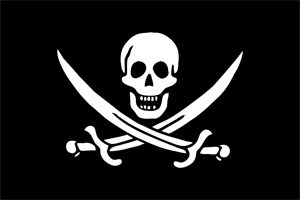
CINCINNATI (AP) – The only thing riskier than a decades-long career in real estate may be hunting for treasure deep below the ocean’s floor.
It’s paying off for father and son Bill and Brent Brisben.
The once-active real estate developers bought salvage rights in June to 75 square miles of Atlantic Ocean off the coast of Florida. They believe up to $900 million worth of gold, silver, jewels and artifacts from an 18th century fleet of Spanish ships is buried deep below the ocean floor there.
In just a month of diving, they’ve already found $500,000 worth of loot including a 400-year-old cannon, 51 gold and 41 silver coins dated from 1698.
Bill Brisben founded and built Sycamore Township-based Brisben Cos. into a national developer and operator of apartment communities. At one time, his company owned 20,000 units in 20 states. He sold the company in 2002 and was appointed by President George W. Bush a U.S. ambassador to UNICEF until 2009.
Although Brisben kept his home in Ohio, he spent much of his time in Florida in recent years building up a collection of recovered treasure.
“All his life he had been fascinated with treasure and treasure hunting,” said his son, Brent. In February, Bill persuaded Brent of Montgomery to join him in Sebastian, Fla., the home of famed treasure hunter Mel Fisher’s Treasure Museum.
Fisher’s family had offered up for sale its custodial rights to search for the remains of the 1715 Spanish Fleet, believed to be strewn along the ocean floor between Melbourne and Stewart, Fla.
“It was too good to pass up,” Brisben said. “Luckily, we were the ones they chose to sell it to.”
The story goes that 11 ships left Havana, Cuba, that year on their way back to Spain. They carried thousands of coins, artifacts and eight chests of jewels that King Philip V planned to use as dowry in his marriage to Queen Elizabeth (called the Queen’s Jewels).
But the ships got caught in a hurricane, and all but one sank. The Queen’s Jewels have since provided the story lines behind the movies The Deep and Fool’s Gold.
The first traces of the fleet were found in the early 1960s, said Carl Fismer, a 40-year treasure hunter who runs the Spanish Main Treasure Co. in the Florida Keys. A Hamilton native, he worked on the 1715 fleet from 1980 to 1992.
Fisher received custodial rights in the early 1960s and had success finding coinage and artifacts through 1990. But since then, major finds have been fewer, Fismer said.
“There is still treasure there to be had,” he said. “But how many years is it going to take to get it?”
Particularly challenging also is the controversy surrounding private treasure hunting in the state of Florida. Federal admiralty law governs business that happens on the sea like marine commerce, navigation, shipping and salvage, but it is handled in state courts.
Because sunken treasure has been lost for hundreds of years, it had been exempt from traditional maritime laws which required findings be split between the owner and hunter. Until 1975, sunken treasure hadn’t been governed by law at all. The U.S. Supreme Court eventually handled a case involving the Fisher family, and ruled that hunters must participate in a process called “divisions” at the end of each year. They bring all the findings during the year to the state, which lays claim to 20 percent. The rest is typically split between the investors and the contractors who found the items.
“You have to have perseverance,” Fismer said. Treasure hunting can be costly and provide few returns, especially after the division process. “Hopefully they’ve got people advising them.”
The Brisbens are prepared for their explorations to take some time. Treasure is typically buried under 6 to 12 feet of sand, and is best found in the summer months when the waters are warmer and calmer. Divers hired by the Brisbens lower an elbow-shaped tube over the propeller of the boat and then fire the engines. When the water flushes through the tube, it comes out the bottom and digs a hole in the sand down to the bedrock. Divers then swim with metal detectors to search the holes.
The Brisbens use a state-of-the-art computer-assisted design system, like one used to design and construct a building. Since 1983, the system has helped hunters track every hole that has been explored and what was found in those holes.
Friends back home expect the Brisbens have taken the same hard look at the risk and reward as they did in the real estate industry.
“My guess is that Bill negotiated and bought in really good, and he probably knows exactly what his downside is,” said Phil Montanus, a partner in Mt. Adams-based real estate firm, Towne Properties. “He’ll personally get involved and work it hard. That’s how he’s been successful in real estate.”
The July 11 findings gave some reassurance that the rewards could be great.
Investors and appraisers already have called about laying claim to the Brisbens’ findings. One coin, for example, is valued at $20,000. Several production companies are interested in a reality show about their operations.
“Everybody is fascinated by this. That’s part of what drew us into it,” the younger Brisben said. “It’s interesting, fascinating and a heck of a lot of fun.”
___
Information from: The Cincinnati Enquirer, http://www.enquirer.com
Copyright 2010 Associated Press. All rights reserved. This material may not be published, broadcast, rewritten, or redistributed.
AP-CS-08-07-10 1258EDT

